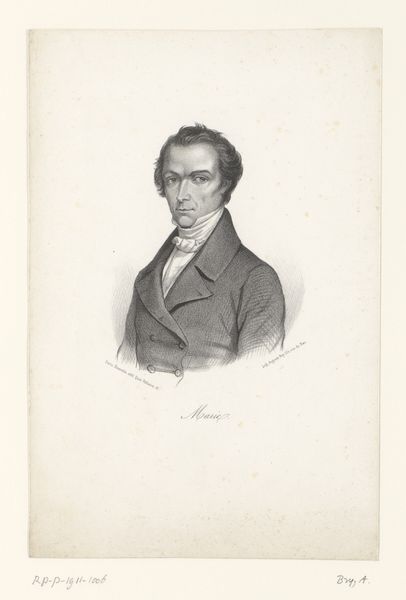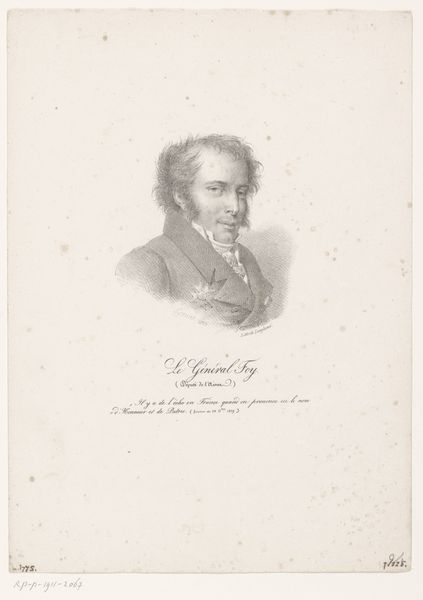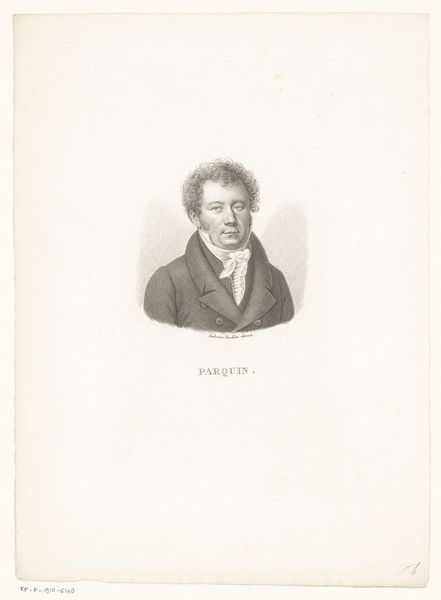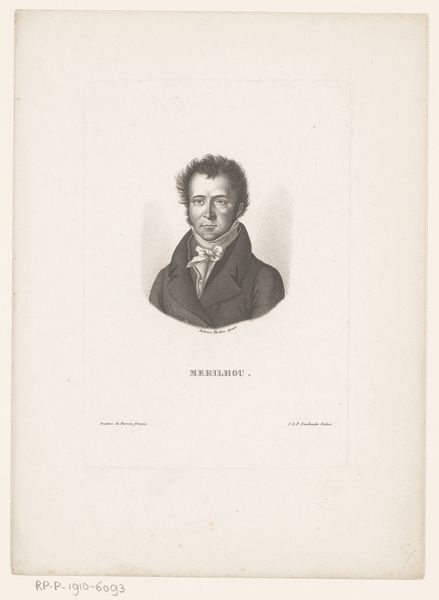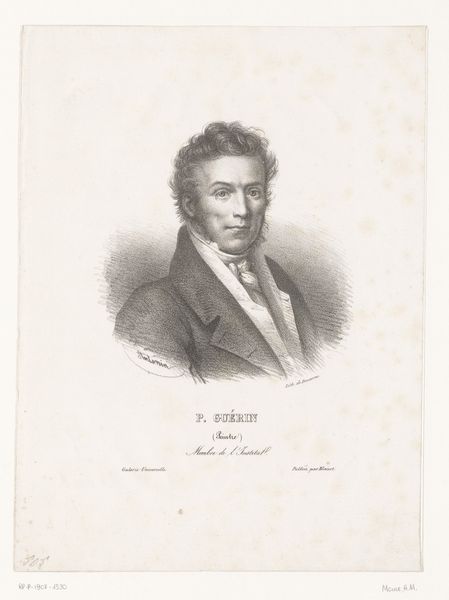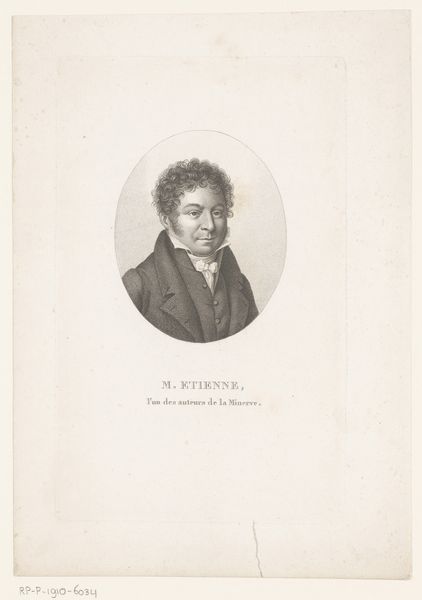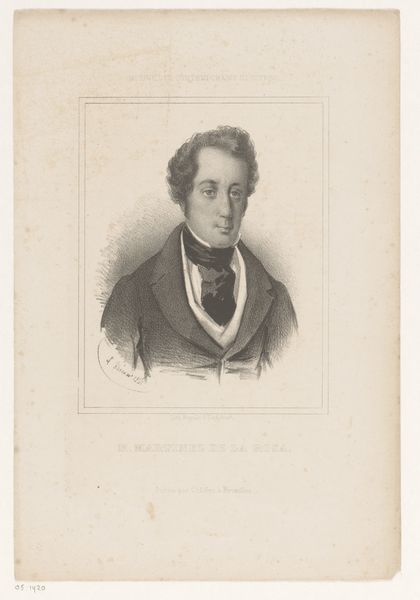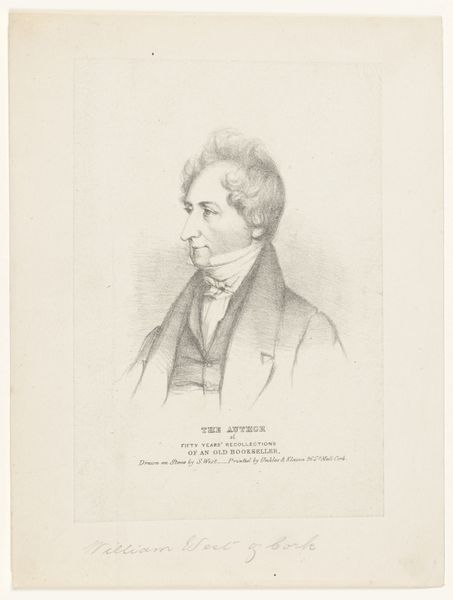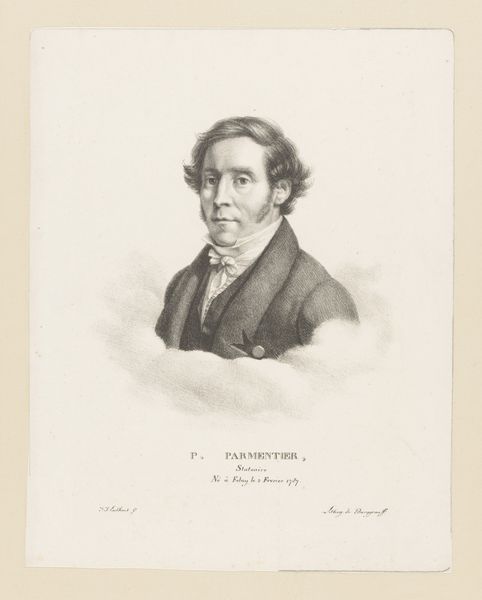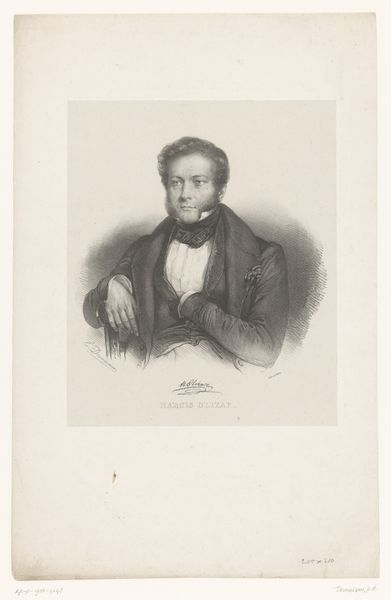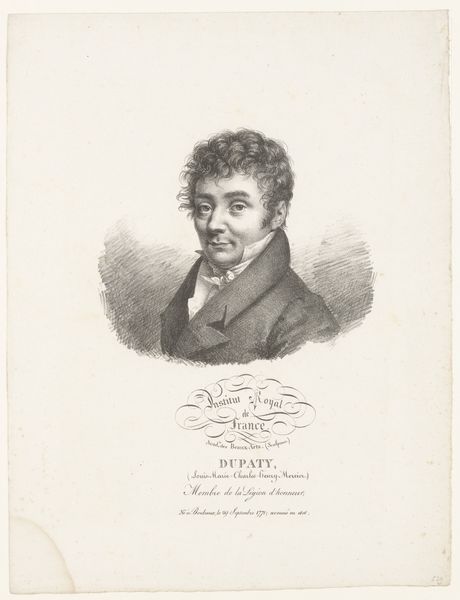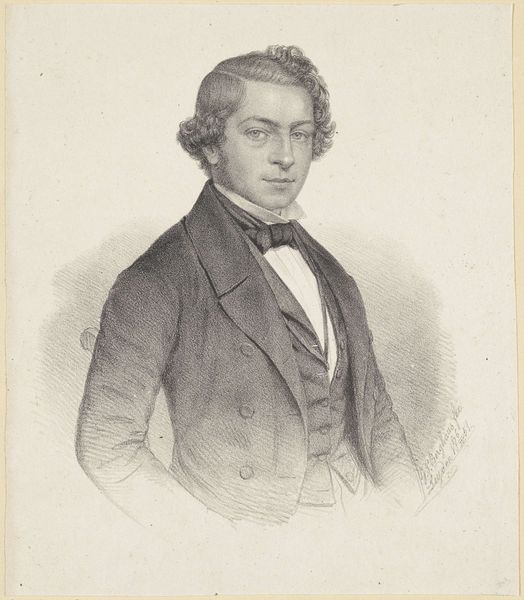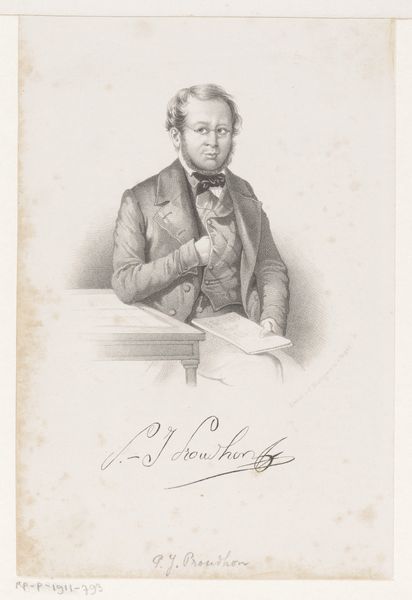
drawing, pencil
#
portrait
#
pencil drawn
#
drawing
#
imaginative character sketch
#
light pencil work
#
pencil sketch
#
old engraving style
#
personal sketchbook
#
pencil drawing
#
romanticism
#
pencil
#
sketchbook drawing
#
portrait drawing
#
pencil work
#
academic-art
Dimensions: height 276 mm, width 181 mm
Copyright: Rijks Museum: Open Domain
Editor: This is Auguste Bry's "Portrait of the Lawyer Adolphe Crémieux," rendered in pencil around 1848. The delicate linework almost gives it an ephemeral quality, despite the rather stern expression on the subject's face. What do you see in this piece? Curator: It's fascinating how Bry uses the intimacy of a pencil sketch to depict a figure like Crémieux. Consider the context: 1848, a year of revolutions. Crémieux was a prominent lawyer and politician deeply involved in advocating for Jewish rights and, more broadly, in shaping the French Second Republic. How does this portrayal of him – this seemingly private medium made public – affect our understanding of his role? Editor: It's interesting to think about how the medium itself contributes to our perception. The "rawness" of a sketch feels more personal and less propagandistic. Curator: Precisely! Academic art often served the function of promoting specific political agendas and projecting power, even during periods of social upheaval. Yet here, Bry presents Crémieux in a seemingly more human light, diverging from the typical heroic portrayals. Does this humanization diminish his authority or, perhaps, make his political actions more relatable, more tied to the everyday struggles of the people? Editor: It makes me think about accessibility. Maybe a pencil drawing feels less like a formal state portrait and more like something that could circulate among a wider audience. Curator: Exactly. Consider the power of accessible imagery in shaping public opinion, in solidifying or undermining political narratives. How might the artist's choice to use such an "informal" style influence the perception, the political effectiveness, of its depicted subject? Editor: That's a really insightful perspective. I hadn't considered the interplay between the artwork’s accessibility and its potential political impact. Curator: It’s all about power and its visual representation, isn't it?
Comments
No comments
Be the first to comment and join the conversation on the ultimate creative platform.
